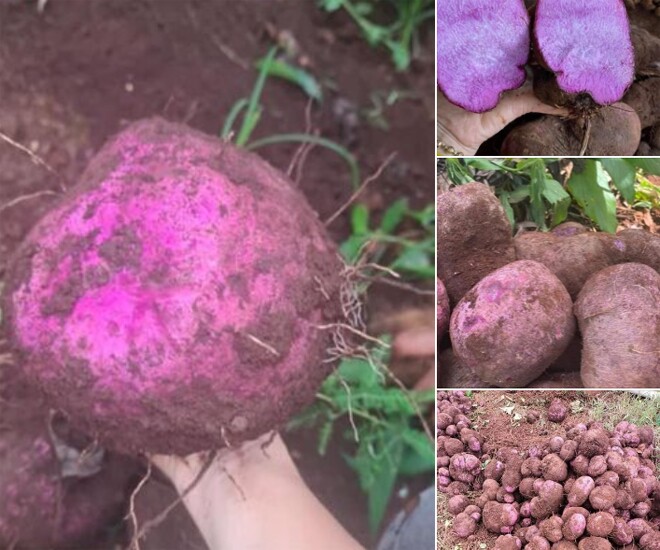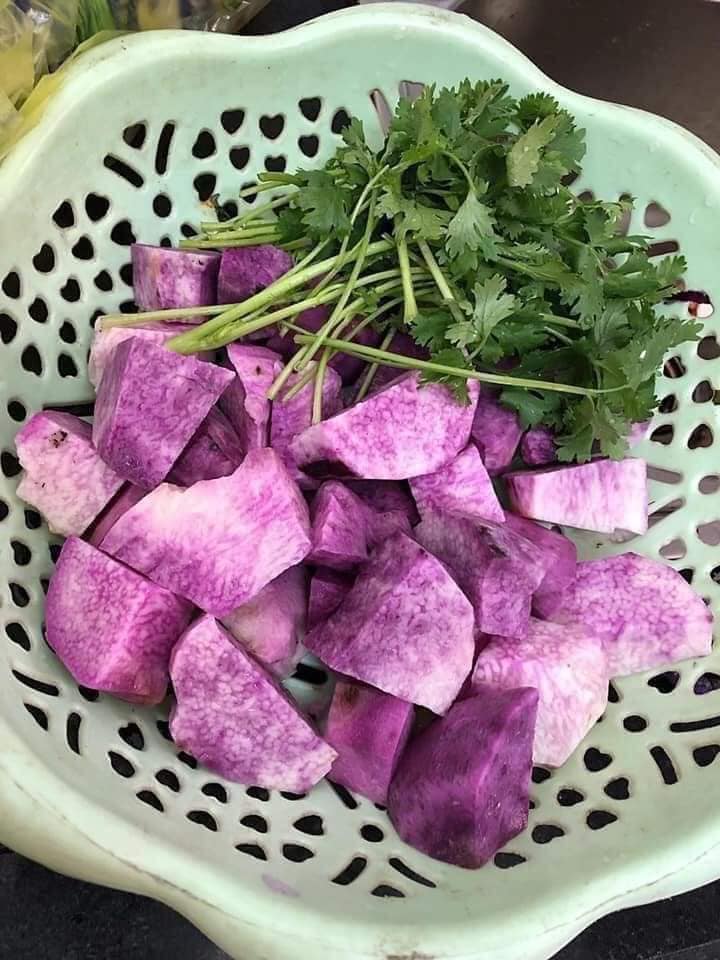Purple yam, also known as winged yam, has the scientific name Dioscorea alata. This type of yam is native to Africa and has a much larger tuber size compared to other varieties, sometimes weighing up to 50kg.

Purple yam tubers are larger and have a more eye-catching purple color than other yams, leading to confusion with taro.
“Purple yam has a grayish-brown skin and purple flesh that becomes smooth and creamy when cooked. It is often mistaken for taro, but they are two different vegetables. Purple yam has a sweet and nutty flavor and can be used in both sweet and savory dishes. Additionally, it is a good source of minerals beneficial to health.”
“Purple yam used to be a staple food during times of scarcity. I remember growing up with various yams in our garden, which we would harvest and eat. Now, purple yam has become a delicacy in the city, sold on e-commerce platforms and online markets for around 50,000-70,000 VND per kg,” shared Ms. Loan from Dong Thap Muoi in Thanh Hoa District, Long An Province.


Purple yam has gained popularity among city dwellers in recent years, with prices reaching up to 70,000 VND per kg.
According to Ms. Loan, due to its economic value, many households in the Dong Thap Muoi region have expanded their purple yam cultivation to supply the market. Purple yam thrives in peaty soil and is typically planted in November, with the harvest season starting in July of the following year. It stands out for its aromatic, tasty, sticky, and nutty flesh, and its diverse colors ranging from charcoal purple to lilac.
Purple yam is highly adaptable and requires minimal care, needing only sufficient water to maintain moisture. After harvest, traders purchase them directly from the farmers to supply various provinces, providing a significant income for the locals.
Purple yam can be used in various delicious dishes, such as yam porridge, yam soup, yam congee, and yam cakes.
Recalling her childhood memories of purple yam, Ms. Hoang Lan from Nghe An shared: “In the past, every household in my village had a few purple yam plants. The tubers were huge, as thick as a leg. During the harvest season, people would dig them up and cook them as a staple food. As society progressed, these unique yams gained popularity, and city dwellers started seeking them out to prepare various delicious dishes.

Purple yam can be used to make a variety of tasty dishes.
I often buy purple yam from the local market to make yam porridge. The porridge has a beautiful purple color and a nutty, aromatic flavor that my whole family loves. If you’re short on time, boiling purple yam is the quickest option. Just wash the yam, put it in a pot, and boil until it’s cooked. For an extra touch of deliciousness, dip the boiled yam into sugar. It will bring back childhood memories and give you a wonderful feeling.”

































